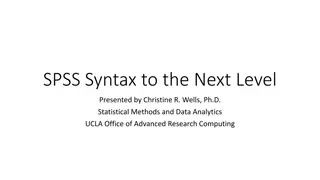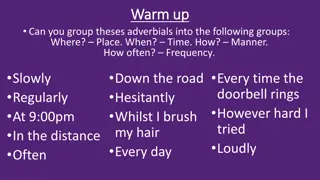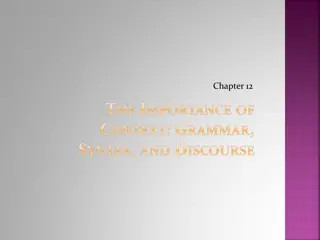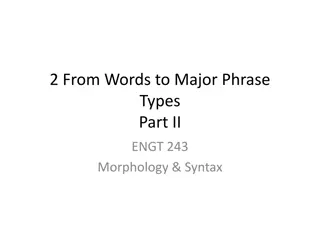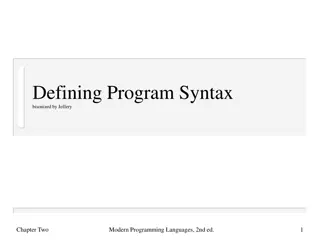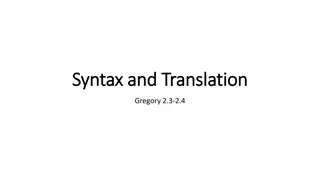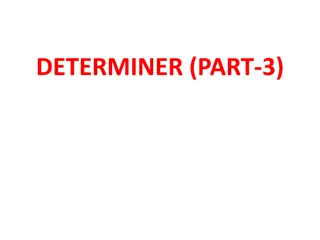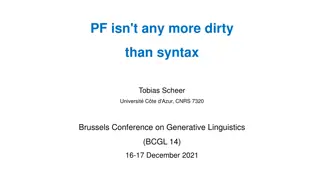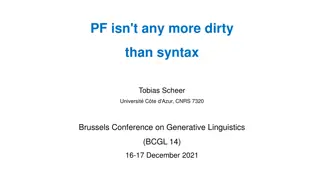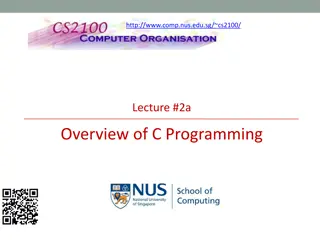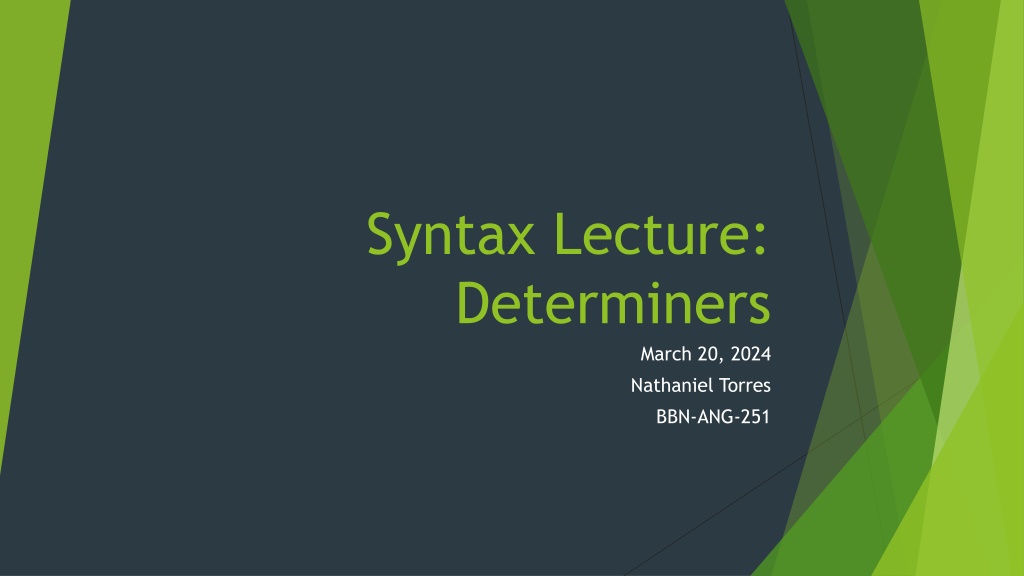
Understanding Determiners in Linguistics
Determiners are essential lexical items in linguistic analysis that categorize articles, quantifiers, demonstratives, and possessives. They aid in specifying nouns within a context, demonstrating definiteness, and playing a crucial role in various languages' structures, including the placement of articles before or after a noun.
Download Presentation

Please find below an Image/Link to download the presentation.
The content on the website is provided AS IS for your information and personal use only. It may not be sold, licensed, or shared on other websites without obtaining consent from the author. If you encounter any issues during the download, it is possible that the publisher has removed the file from their server.
You are allowed to download the files provided on this website for personal or commercial use, subject to the condition that they are used lawfully. All files are the property of their respective owners.
The content on the website is provided AS IS for your information and personal use only. It may not be sold, licensed, or shared on other websites without obtaining consent from the author.
E N D
Presentation Transcript
Syntax Lecture: Determiners March 20, 2024 Nathaniel Torres BBN-ANG-251
Determiners Determiners are a broad class of lexical items that can refer to other categories of words. There is the D category which typically refers to articles in languages that have them. There is the Q category which refers to quantifiers. There is the Dem category which refers to demonstratives. There are also possessives (whose distribution and category will differ cross- linguistically).
Determiners (Cont.) Determiners essentially pick out a noun from a larger context. In less simplistic terms, they semantically pick out a subset of a larger set. This subset may contain one element, or it may contain more than one member. Regardless, they are parts of a larger grouping of elements. These elements are typically associated with a property called definiteness, which means that, as a concept, they are concrete. This means that the noun(s) being modified by a determiner is contextually specific.
Articles Articles are not ubiquitous cross-linguistically. For the languages that do have articles, their distribution is not the same. There are languages that use articles before the noun, and there are those that use articles after the noun as suffixes. Languages that place articles before the noun are languages like English, Hungarian, German, Arabic, Spanish, French, etc. Languages that place articles after the noun include those like Swedish, Norwegian, Romanian, Bulgarian, among others.
Pre-Nominal Articles In these kinds of languages the article always comes before the noun with no exceptions: The cat/ *cat the Any other lexical content that appears within the larger phrase typically comes after the noun. The big silly orange cat/ *the cat big silly orange The takeaway here is that the article (i.e., the determiner) appears as the first element in the phrase in these kinds of languages. There are languages like the Romance languages where this is not the case, and modifiers will come after the noun, even though the article comes before it: Les plus belles filles brunes et fran aises the most beautiful girls brown-haired and French the most beautiful brown-haired French girls (French) Note: In Romance languages like French and Spanish, there is a small category of adjectives that must appear pre-nominally. The rest must appear after the noun.
Post-Nominal Articles In these languages, the article will appear as a suffix on the noun. fat girl (Romanian) Fat-a girl-THE (Romanian) As one might expect, any modifying adjectives in these languages will come after the noun: Fat-a frumoas , de teapt i nalt girl-THE beautiful smart and tall the tall, smart and beautiful girl
An exception Scandinvian languages like other Germanic languages place adjectives before the noun, but their articles are post-nominal. In languages like this, often a so-called double determinative construction is used where the article is paired up with a demonstrative: Ett hus a house (Swedish) Hus-et house-THE (Swedish) But: Det stora gr na hus-et DEM big green house-THE the big green house
Possessives Languages differ on the categorization and distribution of possessives. These are words like English my, your, his, her, etc. In the case of English, these words are usually treated as D s. That is to say that they are functionally like articles. These kinds of possessives are called possessive pronouns. The way that we know this is the case is that they cannot co-occur with the article. My cat/ *the my cat
Possessives (cont.) In other languages, this is not necessarily the case as the behavior of possessives differs. Most obviously, they differ in that they show agreement with the head noun in terms of case, gender, and number. When possessives do this, they are not pronouns, but rather adjectives. moja krasivaya djevushka my.FEM.NOM beautiful.FEM.NOM girlfriend.NOM.FEM my beautiful girlfriend (Russian) m j uveriteln pr beh my.MASC.NOM unbelievable.MASC.NOM story.MASC.NOM my unbelievable story
Demonstratives Demonstratives come in usually three flavors: proximal, neutral, distal. Languages like English and German only have two: the proximal (this/dieser) and distal (that/der). It is typically possible to add adverbs to these elements in order to specify whether distal or proximal is meant: this here/that there. Some languages like Finnish use all three types of demonstratives: t m (this), se (this/that), tuo (that over there).
Demonstratives (cont.) Demonstratives, despite being determiners are not like articles or even possessives, in that they do not occupy the head position of a determiner phrase (DP). They will usually occupy a specifier position, either in the DP or in the NP, depending on which language is being discussed. With respect to properties, they are also different cross-linguistically as in some languages, demonstratives agree with the head nouns, and in others they don t.
Quantifiers This is a more robust category compared to demonstratives. Quantifiers are usually analyzed as heads of their own phrases, so QP. Quantifiers include words like many, some, few, several, etc. Quantifiers have special properties tied to their meanings.
Scope A very important property of quantifiers is known as scope. Scope changes possible interpretations of a clause. There are two kinds of scope: high scope and low scope. For this, let us consider some of the universal quantifiers, namely, every and all. Think about what these words mean. Consider: Everyone dances. This means that for every person x (or for all x, where x is a person), it is true that this person dances. In this case, every holds scope over one (in the compound). What if we add more than one quantifier?
Scope (cont.) Consider the following: Every boy likes some girl. The quantifiers in this sentence are of course every and some. This sentence is ambiguous because there is more than one interpretation. It can either mean that for every boy it is true that they each like a unique, separate girl, or for every boy it is true that they like the same girl.
Scope (cont.) Formally, this can be captured with the following definitions: For every boy x, there is some girl y, where x likes y. For some girl y, every boy x likes y. The first definition above is an example of what is called wide scope. The second definition is what is called narrow scope. The difference in the two meanings has to do with a movement operation. What happens in the narrow scope definition is that the QP some girl raises over the QP every boy. This is a very important syntactic operation theoretically and practically in the semanto-syntactic interface.
Exercises Determine whether the following possessives are pronominal or adjectival: Those books are mine. That is your dog. Se on minun it be.3SG.PRS my.GEN dog.NOM It (That) is my dog. koira. (Finnish) Das war meine that was my.FEM sister.FEM who.FEM my.ACC coffee.ACC made has It was my sister who made my coffee. Schwester, die meinen Kaffee gemacht hat.
Exercises 2 Determine whether the following has wide scope, narrow scope, or both: All the students ate pizza for lunch. Every student did some project for the class. Two girls did every task the teacher asked of the class.


